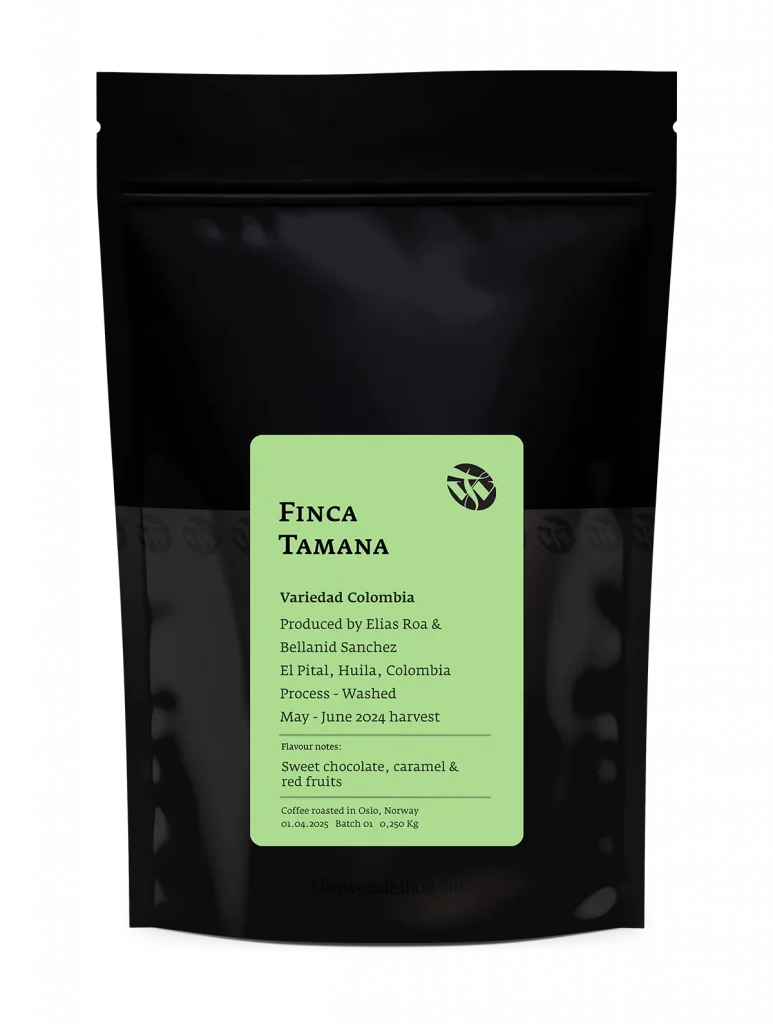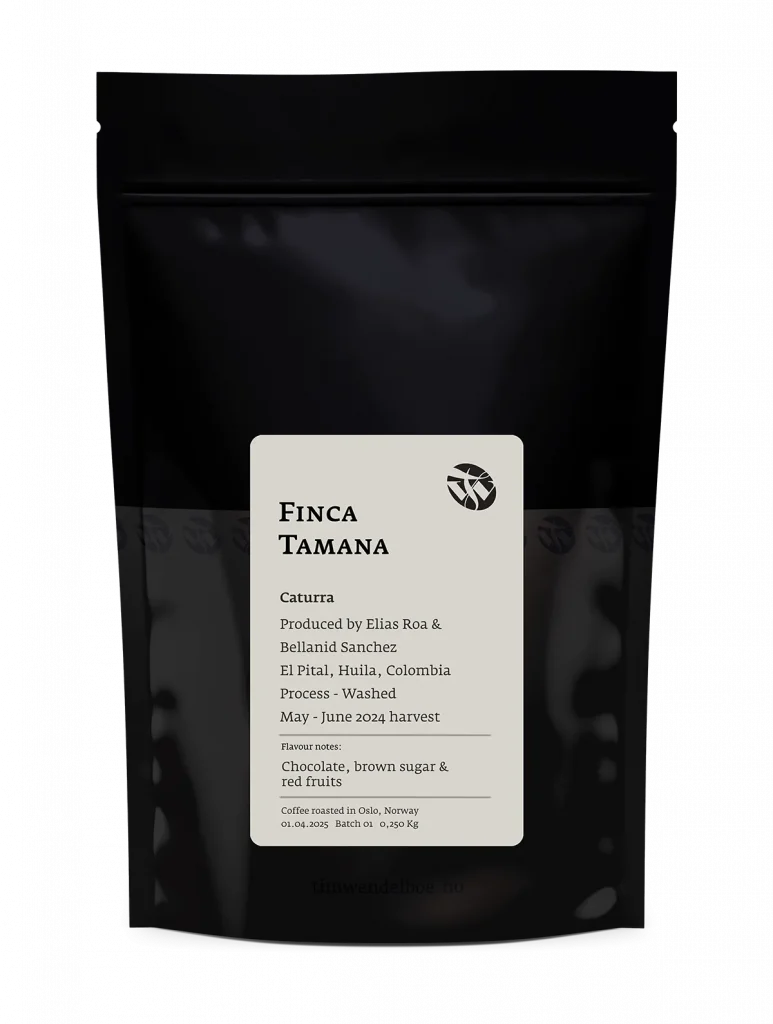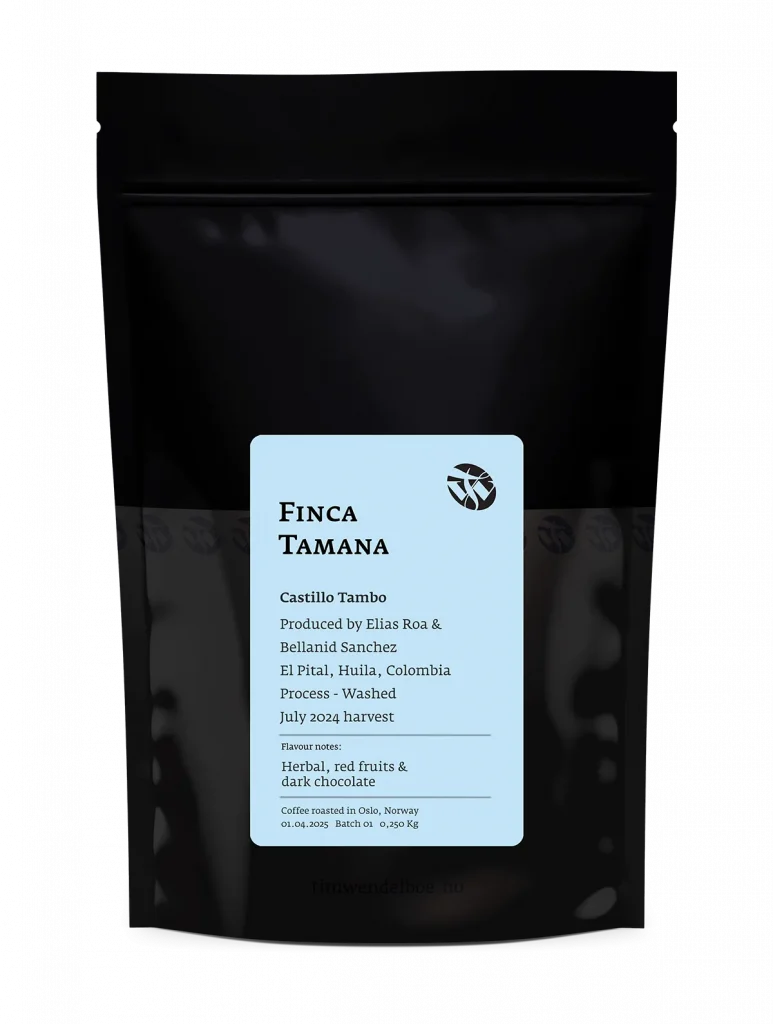Dear coffee subscriber,
I recently came back from a very inspiring trip to Central America and Colombia, where we just launched one of our biggest projects to date that will hopefully have a massive impact on all the farms we work with, the environment, and also the quality of the coffees we buy and the lives of the people who grow it.
To give you the short version, we will be testing biological growing techniques alongside the conventional techniques that the farmers are already using. The goal is to convert all the farms from being dependent on nitrogen fertilisers, pesticides and fungicides, to focusing on bringing back the health of the soils in order to grow trees with better health, without the use of damaging chemicals and mineral fertilisers.
This is in line with our 10-year goal of only buying biologically grown coffee within the next 10 years. If you want to learn more about this project, we will be releasing several podcast episodes about it in the coming months.
Some of this work already started many years ago, and this month’s coffees reflect that journey. Since 2012, I have personally spent several months a year at Finca Tamana in Colombia, where I have worked closely with Elias Roa and Bellanid Sanchez in order to improve the coffees on their farm.
When we first started working together, their coffees were scoring an average of 83 points, which for us is not coffee we would normally even consider buying. But I like a big challenge, and since 2012 we have made many improvements to the farm together. We have looked at almost every step in the production – from stopping the use of herbicides to planting new cultivars of coffee, planting shade trees, improving the processing, drying, storage and logistics.
In the last three years, the average score of Elias and Bellanid’s coffees has been around 86.5 points, which for traditional cultivars like Castillo, Caturra and Variedad Colombia is probably the upper limit of what we can achieve for washed coffees from this area in Huila. These cultivars are the coffees we are sending out this month, and they represent the benchmark quality from this farm.
Last year, the farm was heavily affected by El Niño, which meant almost no rain throughout the whole year. Regardless of this, Elias and Bellanid were able to produce a lot of good quality coffees. The coffees arrived in Norway in December, and we are just about to launch more coffees from Finca Tamana in the coming months.
To learn more about the farm and the coffees, check out our monthly tasting video or continue reading below.
I hope you will enjoy the coffees…
Finca Tamana Variedad Colombia (1st & 4th bag)

Flavour notes
Sweet chocolate, caramel & red fruits
Producer
Elias Roa & Bellanid Sanchez
Harvest
May – June 2024
Origin
El Pital, Huila, Colombia
Process
Washed
Cultivar
Variedad Colombia
When Elias and his wife Bellanid bought Finca Tamana in 2011, most of the farm was planted with two cultivars: Caturra and Variedad Colombia. Since then, the Caturra trees have been attacked by leaf rust almost every year, and the quality and production has therefore been a bit up and down. The Variedad Colombia is resistant to leaf rust and because of that it has consistently been tasting better compared to the Caturra over the years.
Many buyers are sceptical of the Variedad Colombia cultivar, as it tends to have a more herbal aftertaste compared to the traditional Caturra. Apart from this, they taste very similar. (After all, Caturra was used to develop the Variedad Colombia hybrid by cross-pollinating it with the Timor Hybrid.) However, we have found that when the coffee cherries are picked super ripe at a purple colour, the herbal notes tend to be more in the background, and you will get more fruity characteristics in the cup. The meticulous picking and sorting protocols at Finca Tamana result in a coffee that is super sweet, with subtle ripe red fruit flavours. The coffee has a recognisably clean and smooth cup profile, thanks to the careful processing and drying techniques we have developed together with Elias and Bellanid over the years.
To ensure we source the very best coffees from Tamana each year, I taste through all individual pickings of each cultivar and select the best ones. Because they produce many small batches of Variedad Colombia, I usually select between 10 and 15 pickings, which are then blended into two or three different lots depending on picking dates, moisture content, quality, and cup profile. It has taken many years and considerable effort to gradually elevate the quality of these coffees, but I believe we have successfully brought their “regular” coffee to a new level that is consistently sweet and clean, with a distinctive flavour profile that reflects the cultivar and region this coffee is from.
Finca Tamana Caturra (2nd & 5th bag)

Flavour notes
Chocolate, brown sugar & red fruits
Producer
Elias Roa & Bellanid Sanchez
Harvest
May – June 2024
Origin
El Pital, Huila, Colombia
Process
Washed
Cultivar
Caturra
There are still a few lots planted with Caturra left on the farm and probably always will be, but since the production is very small and the flavour is very similar to the Variedad Colombia we are normally blending the two based on harvest date and quality. Last harvest we identified two small lots of Caturra that tasted really good. It made up enough volume so that it made sense to separate them from the Variedad Colombia. That means this lot is from two single days of picking from one lot at the farm. I found this coffee to have a really sweet and smooth texture with subtle notes red fruits and with the classic «panela» or caramel flavour that the coffees from Huila are so well known for.
Finca Tamana Castillo Tambo (3rd & 6th bag)

Flavour notes
Herbal, red fruits & dark chocolate
Producer
Elias Roa & Bellanid Sanchez
Harvest
July 2024
Origin
El Pital, Huila, Colombia
Process
Washed
Cultivar
Castillo Tambo
Castillo is an advanced hybrid of Variedad Colombia, developed by the Colombian research organisation Cenicafe. Researchers spent over 30 years breeding this cultivar, which is resistant to leaf rust and capable of producing very good cup quality.
Since it’s launch a few years ago, Colombia experienced a huge outbreak of leaf rust, but most farmers recovered in record time as the Colombian coffee growers federation helped supporting them with new Castillo seedlings to replace the traditional susceptible cultivars like Bourbon and Caturra. Today, over 60% of the coffee grown in Colombia consists of Castillo cultivars.
But what about cup quality? There has been considerable scepticism among quality-focused coffee professionals, who fear that the flavourful Caturra will be replaced by hybrids such as Castillo, which are perceived as inferior. I will not debate here whether one cultivar is better than the other. However, I have tasted exceptional and disappointing examples of both Caturra and Castillo coffees. Many coffee tasters note that hybrids generally have a slightly more herbal aftertaste, which can indeed be true. Yet, we have found that when cherries are picked at a deep purple stage, herbal flavours are muted, and you get more sweetness and fruity flavours in the cup. I personally believe it all boils down to how you harvest, process and roast the coffee and of course how healthy the coffee trees were during production.
This particular Castillo comes from the regional selection named Tambo. There are several different types of Castillo, and this is one of three types being produced at Tamana. I have been fortunate to be able to taste many of the different Castillo selections over the years, and in my opinion the one that has been consistently tasting better than the rest is the Castillo Tambo. It can sometimes have a delicate floral flavour in addition to the well-known sweet, chocolate, caramel, herbal and fruity flavours you typically find in these hybrid coffees.
